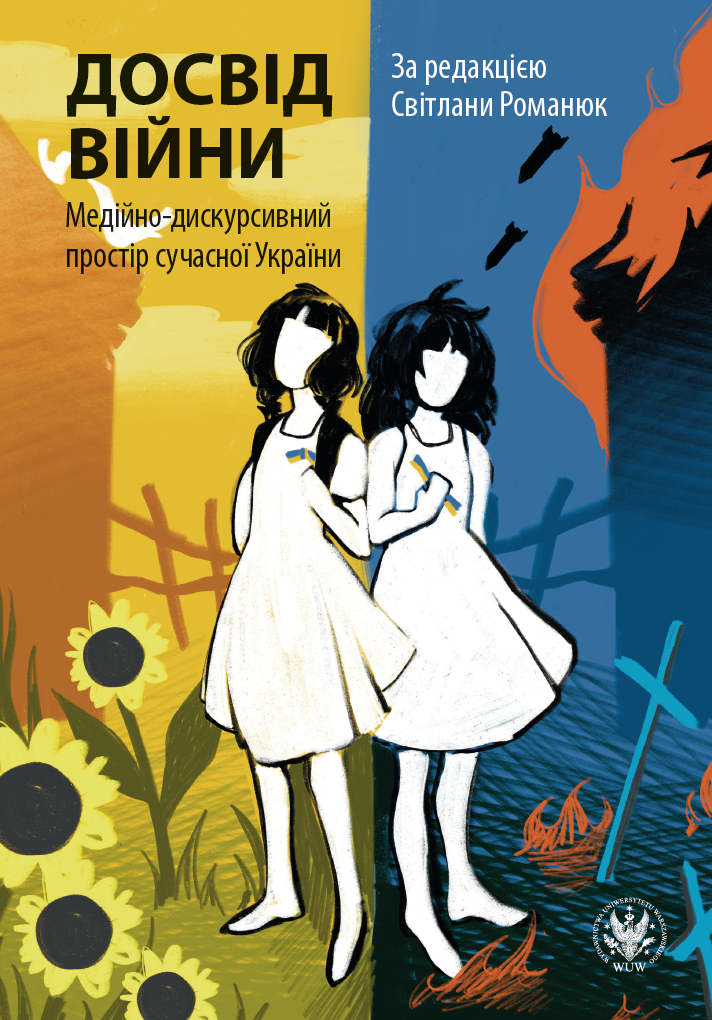Російсько-українська війна: структура, лексико-семантичні засоби реалізації стратегічного наративу в посланнях глави УГКЦ Блаженнішого Святослава (Шевчука)
Russian-Ukrainian War: The Structure and Lexical-Semantic Means of Implementing the Strategic Narrative in Messages of the Head of the Ukrainian Greek Catholic Church Archbishop Sviatoslav (Shevchuk)
Author(s): Adriana Chuchwara
Subject(s): Cultural history, Theoretical Linguistics, Applied Linguistics
Published by: Wydawnictwa Uniwersytetu Warszawskiego
Keywords: strategic narrative; Russian-Ukrainian war; religious message; Archbishop Sviatoslav (Shevchuk)
Summary/Abstract: The purpose of the study is to reveal the structure and lexical-semantic means of implementing the “Russian-Ukrainian war” strategic narrative in messages of the Head of the Ukrainian Greek Catholic Church Sviatoslav (Shevchuk). The tasks are: (1) to identify topics and linguistic means of narrative implementation; (2) to find out what essential features express the content of the researched narrative before and after 2022. The material for analysis comprises 9 Christmas (2014–2022) and 10 Easter (2014–2023) messages available online. The research methods used are content analysis, the descriptive method and the comparative method. The Christmas (2014–2022) and Easter (2014–2023) messages highlight the following topics: the 2014–2023 war, circumstances of the 2014–2023 war, consequences of the 2014–2023 war, prospects for ending the 2014–2023 war. Until 2022, regarding the linguistic expression of the topics 2014–2023 war and circumstances of the 2014–2023 war, the following means to name the events in Ukraine were used: aggression, struggle, fight, war, Way of the Cross, Procession of the Cross. After 2022, these include hell, struggle, open war, (Russian) occupation and the Lord’s cross. The leader of the Ukrainian Greek Catholic Church calls the events before and after 2022 a war, with the messages after 2022 referring to an open war. Religious discourse both before and after 2022 is represented by the metaphors of "Way of the Cross, Procession of the Cross, and the Lord’s Cross". The category of time in the discourse of the 2014–2023 messages of the Church Head was expressed linearly, based on sequential disclosure of events. The numerals used in the messages testify to the beginning of this war in 2014. Until 2022, the author of the messages localizes the event in space using phrases like in the eastern regions of our country, in the East of Ukraine. After 2022, the messages speak about the events taking place in Ukraine, in the Ukrainian sky, in every corner of Ukraine. The localization of events in space has thus expanded. There is no determined nomination of the aggressor in the analyzed corpus of texts until 2022. After 2022, the author of the messages points to the enemy – namely Russia, Russian troops (aggressor, enemy, (Russian) invader, occupier, neighbour, the one who brings death, the one who wants to enslave with death). In the discourse of religious messages before and after 2022, means of nomination of defenders of Ukraine are also attested. Speaking about the armed forces of the state after 2022, the author of the message designates them with the toponymical adjective Ukrainian (Ukrainian army) and the pronoun our (our army). Archbishop Sviatoslav expands the meaning of the concept of front, understanding it in spiritual as well as physical terms. The analysis undertaken reveals that the Head of the Ukrainian Greek Catholic Church adeptly paints an authentic picture of the world in his messages. This authenticity is underscored by the unreserved coverage of social and political developments transpiring in Ukraine.
Book: Досвід війни. Медійно-дискурсивний простір сучасної України
- Page Range: 153-169
- Page Count: 17
- Publication Year: 2024
- Language: Ukrainian
- Content File-PDF

